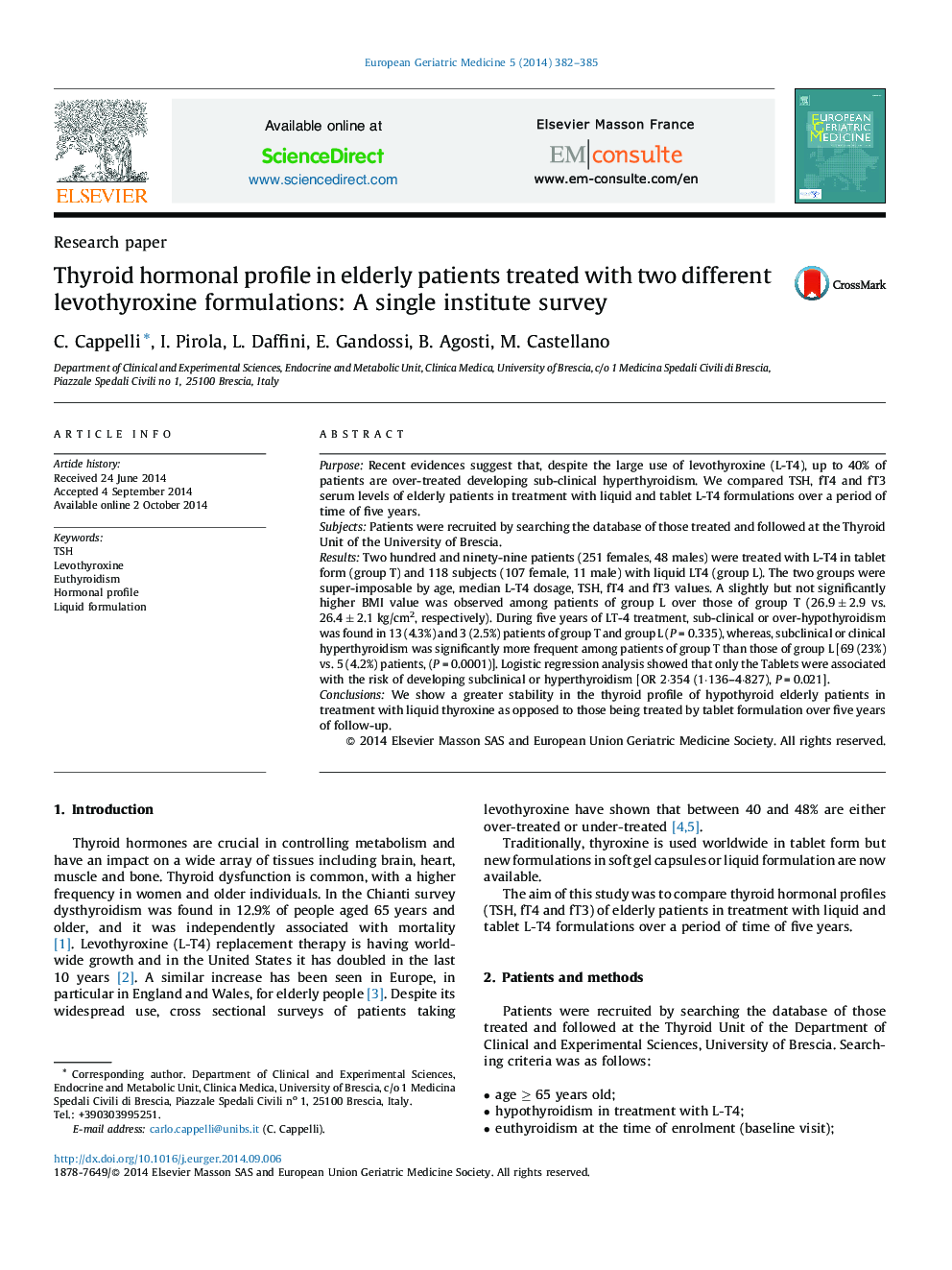| Article ID | Journal | Published Year | Pages | File Type |
|---|---|---|---|---|
| 3324058 | European Geriatric Medicine | 2014 | 4 Pages |
PurposeRecent evidences suggest that, despite the large use of levothyroxine (L-T4), up to 40% of patients are over-treated developing sub-clinical hyperthyroidism. We compared TSH, fT4 and fT3 serum levels of elderly patients in treatment with liquid and tablet L-T4 formulations over a period of time of five years.SubjectsPatients were recruited by searching the database of those treated and followed at the Thyroid Unit of the University of Brescia.ResultsTwo hundred and ninety-nine patients (251 females, 48 males) were treated with L-T4 in tablet form (group T) and 118 subjects (107 female, 11 male) with liquid LT4 (group L). The two groups were super-imposable by age, median L-T4 dosage, TSH, fT4 and fT3 values. A slightly but not significantly higher BMI value was observed among patients of group L over those of group T (26.9 ± 2.9 vs. 26.4 ± 2.1 kg/cm2, respectively). During five years of LT-4 treatment, sub-clinical or over-hypothyroidism was found in 13 (4.3%) and 3 (2.5%) patients of group T and group L (P = 0.335), whereas, subclinical or clinical hyperthyroidism was significantly more frequent among patients of group T than those of group L [69 (23%) vs. 5 (4.2%) patients, (P = 0.0001)]. Logistic regression analysis showed that only the Tablets were associated with the risk of developing subclinical or hyperthyroidism [OR 2·354 (1·136–4·827), P = 0.021].ConclusionsWe show a greater stability in the thyroid profile of hypothyroid elderly patients in treatment with liquid thyroxine as opposed to those being treated by tablet formulation over five years of follow-up.
